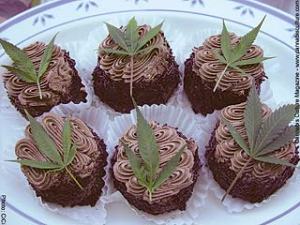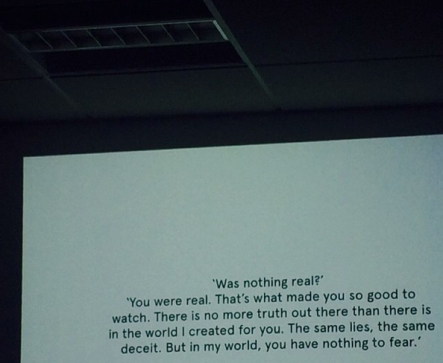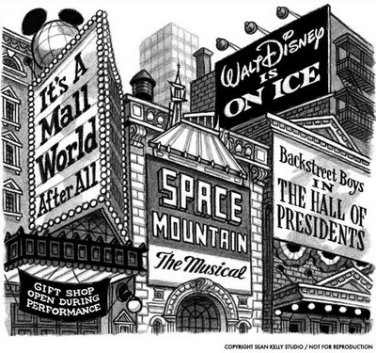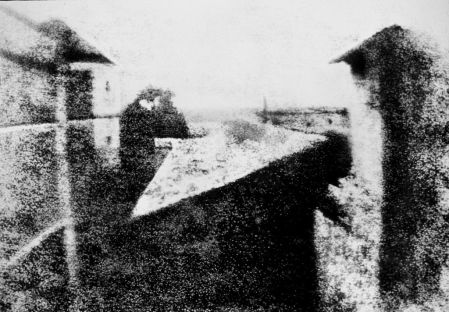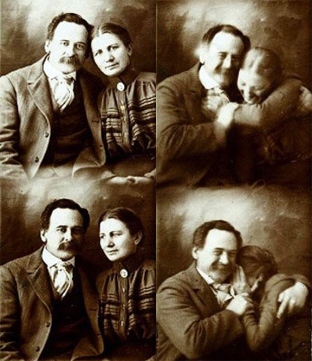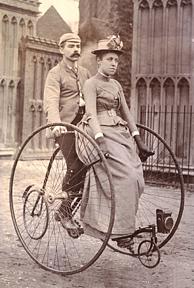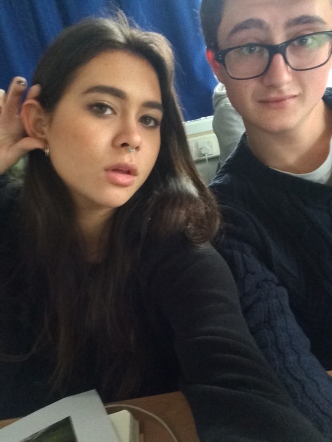Andrea asked us to write an ‘uncreative’ form of text using different things we find on the internet – rearranging and taking different words and text to create our own:
‘Burnt spaces cakes on fluffy American pancakes shouldn’t glow green’
I would have to say ‘Don’t knock it until you try it’. I was very skeptical at first of whether I would like the taste of The Glowing Green Smoothie™ for breakfast but then I tried it and it is delicious! Now I cannot get enough of it! If you start with this and slowly make other modifications you will be feeling so amazing that you won’t want to revert back to your old habits of eating.
Another thing I found really helpful was to remember: If you slip up and eat something unhealthy, don’t just give up for the rest of the day and have an all or nothing attitude. Accept you have made a mistake, move on and try your best to make up for it with your other meals! You can’t beat yourself up, just try the best you can slowly but surely.
Wow – when you really don’t want to hold back, pile all the toppings on these fluffy American pancakes.
1. Heat a large frying pan until hot, add the butter and heat until melted and foaming. Place ladlefuls of the batter into the pan and cook for 1-2 minutes, or until bubbles start to form on top of the batter. Turn the pancakes over using a spatula and cook for a further minute on the other side. Remove from the pan and keep warm until ready to serve. Repeat the process with the remaining batter
2. Meanwhile, heat a frying pan until hot, add the bacon and cook for two minutes on each side, or until crisp. Remove from the pan and drain on kitchen paper.
3.To serve, divide the pancakes among four serving plates, top with the bacon and drizzle with maple syrup.
Something really funny happened last Thursday. I was walking towards Washington Square Park to do some errands, and at the exact second I walked up to the park a medium-sized, moss green van pulled up. A few young guys in their early twenties, floppy jeans and baseball hats opened up the trunk and started pulling out cases of Zico coconut water.
“Hey miss, want a case of coconut water?” asks one of the dudes.
“A whole case?? Um, sure? I could go home and drop them off I guess.” I shrugged. I had heard of them before and knew they were all natural- though I had never purchased them before.
“Good, take two cases!”
So I got loaded up with 2 mango flavored pure coconut water cases of Zico, I turned and went the block and a half home to drop them off. Then I turned to walk back directly the same way…
“Wait miss— you have to take another one, ’cause there is the other flavor too!”
Okay, skip ahead to now, 4 days later. In TOTAL, I received 3 cases of the coconut water that was blessed to me by the universe. I mean, what are the chances to walk by the Zico truck at the same exact time??? There was like a 10 minute window there, b/c those dudes were obviously giving them away by the case to get their sample-giving job done with.
Cooking with marijuana isn’t always as easy as it looks. Burnt space cakes, weed butter that tastes like compost, a pasta sauce that doesn’t get you high: these are just a few of the problems that regularly vex would-be edibles chefs at home.
But it doesn’t need to be that way. In order to learn more about how to make pot play nice with food, I got in touch with Ruben Tillart, who works at PLLEK restaurant in Amsterdam and who invented a Super Lemon Haze ice cream for the annual Cannabis Cup.
When I ask Tillart why people fail to get stoned from their weed-infused food, he explains that it’s a matter of temperature. “Cakes shouldn’t be baked in a oven that’s too hot—320°Fahrenheit will do the trick—or you will burn off all the THC,” he tells me. “Also, weed butter is very important, and you have to make that in a bain-marie. Without weed butter, there’s really nothing you can do.”
Coconut water is packed with potassium and electrolytes and also helps build tone when you are doing strength-based activities, like practicing Hatha Raja yoga, etc. Spirulina is 67% green algae protein, and it also contains Omega 3 fatty acids, all the essential amino acids, Vitamin B12, over 2000 enzymes, and lots of iron and magnesium! ☺ You’ll also be amazed at how tasty it is.

